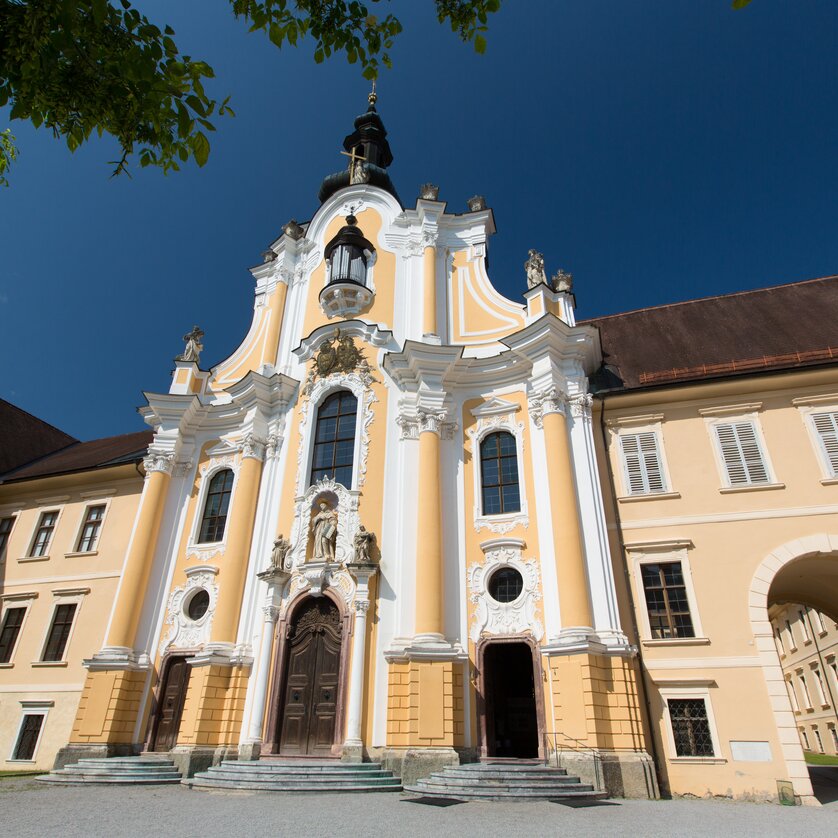Cistercian Monastery Rein
The Rein Abbey, founded in 1129, is the oldest Cistercian abbey in the world. The basilica, the library and the grave of Margrave Leopold can be visited on guided tours.
Uplifting for body and soul – the promise of the picturesque Cistercian Monastery Rein and environs. The sublime beauty of this baroque collegiate church radiates over the picturesque landscape to the north of Graz and its lovely forests are ideal for an extended walk or hike. Cistercian monks have been living in this monastery complex for more than 800 years. At the monastery’s library, manuscripts from the middle ages, prepared in the monastery’s own scriptorium, entertain young and old alike.

Details
Like most Cistercian monasteries, Rein Abbey is located in a remote valley and next to a stream, because in observing St. Benedict's Rule, summed up in the motto "Ora et Labora" (Pray and work!), the monks have always placed much value on manual labour. In 1129, Margrave Leopold the Strong invited monks from Ebrach in Franconia to establish a monastery at Rein. It was the 38th monastery of the Cistercian order founded in Southern France in 1098. The monks engaged in farming, fish breeding and trade, but also worked in their scriptorium. About 300 medieval manuscripts and incunabula (early prints) remain among the approximately 100,000 books in the Abbey's library.
In the mid-18th century, the Graz architect, Johann Georg Stengg, gave the abbey its Baroque appearance. The abbey church which is 76m long, 18m wide and 17m high is among the biggest and most beautiful churches in Styria. Painter Josef Adam Mölck left no space empty. Renowned artists of the Baroque period furnished the church with impressive altars and sculptures. The high-quality painting "Adoration of the Shepherds" at the high altar is a work of the famous Austrian Baroque artist Johann Martin Schmidt ("Kremser Schmidt").
Two princely heads of Styria are buried at Rein Abbey. Duke Ernest the Iron, father of Emperor Fredrick III, rests in a chapel next to the choir. The marble tomb slab shows the duke and his armour in detail and is a masterpiece of Gothic sculpture (from around 1425). In 2006, during renovation works at the Marian Chapel, in 2006 the tomb of Margrave Leopold the Strong, the founder of the monastery, was discovered. Special guided tours show the tomb and archaeological finds, not only from the early years of the monastery - some of them even date from the Copper Age.
By the way: Graz, the Styrian capital, is first mentioned in a document of Rein Abbey (unfortunately, not preserved in the original) giving the name of a "Dietmarus de gracz" in 1128.





